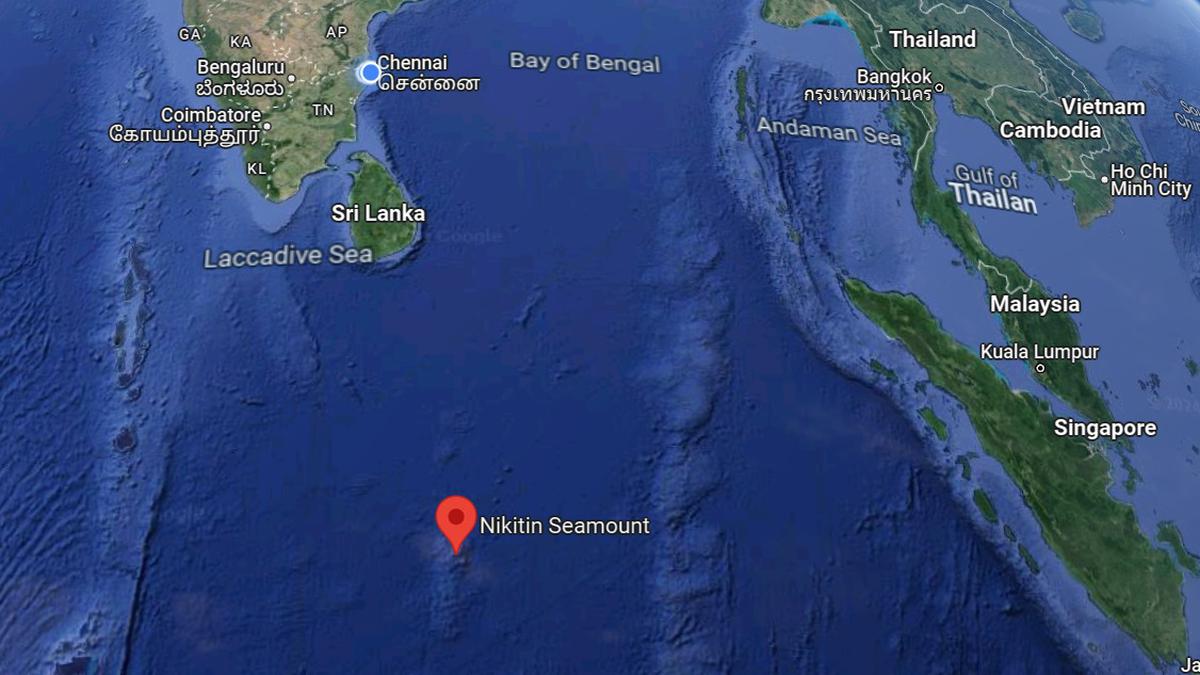Carlsberg RidgeRegion
- 19 Sep 2025
In News:
India has secured an exploration contract from the International Seabed Authority (ISA) to explore polymetallic sulphide deposits in the Carlsberg Ridge region of the north-western Indian Ocean. The agreement marks a major step in India’s pursuit of deep-sea resource development and its broader vision under the Deep Ocean Mission.
About the Agreement
- The exploration contract grants India the right to survey and explore an area of approximately 3,00,000 square kilometres in the Carlsberg Ridge, a tectonically active region rich in polymetallic sulphides — deposits containing valuable metals such as copper, zinc, gold, silver, and rare elements.
- The International Seabed Authority (ISA), an autonomous body under the United Nations Convention on the Law of the Sea (UNCLOS), regulates mineral exploration and exploitation activities in international seabed areas beyond national jurisdictions.
- This licence enhances India’s presence in seabed resource exploration, complementing its earlier exploration area for polymetallic nodules in the Central Indian Ocean Basin.
About Carlsberg Ridge
- The Carlsberg Ridge is a mid-oceanic ridge — a divergent plate boundary — located in the western Indian Ocean.
- It extends from the triple junction of the African, Indian, and Australian plates, connecting to the Mid-Indian Ridge, and runs northwest toward the Gulf of Aden.
- The ridge acts as a tectonic boundary between the Somali Plate and the Indian Plate.
- Geographical features:
- Lies at an average depth of 6,000–12,000 feet (1,800–3,600 m) below sea level.
- Rises about 7,000 feet (≈2,100 m) above the surrounding seafloor.
- Extends westward near Socotra Island, eventually linking with the East African Rift System via the Gulf of Aden.
- It is one of the most prominent mid-ocean ridge systems in the Indian Ocean, characterized by frequent seismic activity and hydrothermal vents, which are potential sources of metal-rich sulphide minerals.
Significance of the Exploration
- Strategic Resource Security:Polymetallic sulphides contain economically vital metals like copper, zinc, gold, and silver, essential for clean energy technologies, electronics, and strategic industries.
- Technological Advancement:The project supports India’s Deep Ocean Mission, fostering indigenous capability in deep-sea mining, remotely operated vehicles (ROVs), and underwater robotics.
- Scientific and Environmental Research:Exploration in the Carlsberg Ridge will advance understanding of seafloor geology, hydrothermal systems, and biodiversity in deep-sea environments.
- Geopolitical and Economic Leverage:Strengthens India’s position in global ocean governance and the blue economy, ensuring equitable access to seabed resources.
About the International Seabed Authority (ISA)
- Headquarters: Kingston, Jamaica
- Established: 1994 under UNCLOS (1982)
- Mandate: Regulates mineral-related activities in the “Area” — the seabed and ocean floor beyond national jurisdiction — ensuring that exploration and exploitation are conducted for the benefit of mankind while protecting the marine environment.
Carlsberg Ridge & Afanasy-Nikitin Seamount

- 28 Mar 2024
Why is it in the News?
Indian delegates have been visiting the International Seabed Authority (ISA), Jamaica to strengthen efforts to explore two deep sea regions in the Indian Ocean for mining, according to reports this week.
What is the Carlsberg Ridge?
- The Carlsberg Ridge is the northern section of the Central Indian Ridge, a divergent tectonic plate boundary between the African Plate and the Indo-Australian Plate, traversing the western regions of the Indian Ocean.
- The ridge of which the Carlsberg Ridge is a part extends northward from a triple point junction near the island of Rodrigues (the Rodrigues Triple Point) to a junction with the Owen Fracture Zone.
- The ridge started its northwards propagation in the late Maastrichtian and reached the incipient Arabian Sea in the Eocene.
- Then it continued to accrete basalt but did not propagate for nearly 30 million years ago.
- Then, in the early Miocene, it started to propagate westwards towards the Afar hot spot, opening the Gulf of Aden.
- The Carlsberg Ridge is seismically active, with a major earthquake being recorded by the U.S. Geological Survey at 7.6 on the moment magnitude scale in July 2003.
- The ridge was discovered by the Danish research vessel Dana during the Carlsberg Foundation's Oceanographic Expedition around the world (1928–1930), better known as the 2nd Dana Expedition, and named after the Carlsberg Foundation, which funded the entire expedition and subsequent analysis and publication of results.
About the Afanasy Nikitin Seamount (ANS) Seabed:
- The ANS is a major structural feature in the Indian Ocean, rising up above the sea bed but below the surface, and forming a seamount.
- It is 400 km long and 150 km wide, and is located in the Central Indian Basin — southeast of Sri Lanka, right below the equator, to the west of Singapore.
- It was formed about 80 million years ago, while dinosaurs still roamed the Earth.
- The Seamount is named after Afanasy Nikitin, a 15th-century Russian merchant who was one of the first to document his travels to India.
- A black monolith is also erected in his honor at Revdanda, about 100 km away from Mumbai, where he is thought to have first set foot in the country.
- The ANS seamount is about 3,000 km from India’s coast and is rich in cobalt, copper, manganese, and nickel.
What are Seamounts?
- Seamounts are submarine mountains originating from volcanic eruptions beneath the ocean's surface, serving as critical habitats for diverse marine ecosystems.
- Similar to terrestrial volcanoes, seamounts can exhibit varying states of activity, including active, dormant, or extinct stages.
- They typically form near mid-ocean ridges, where tectonic plates separate, allowing magma to ascend and solidify on the seabed.
- Notably, seamounts also emerge near intraplate hotspots and oceanic island chains, such as island arcs, characterized by volcanic and seismic activity.
- These underwater formations hold significant scientific value, offering insights into mantle composition, plate tectonics, and oceanic circulation dynamics.
- Moreover, seamounts play a crucial role in nutrient cycling and marine life proliferation, fostering localized upwelling of nutrient-rich waters that support diverse biological communities.
